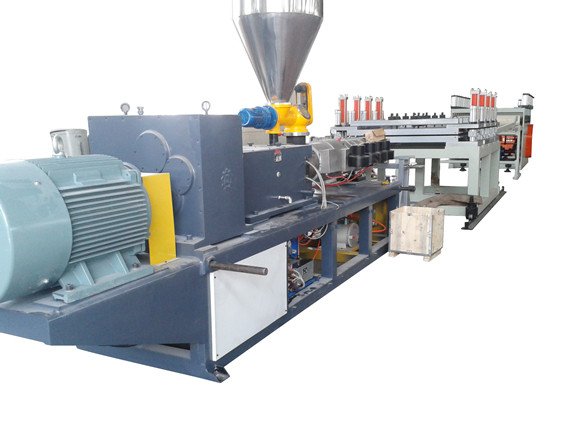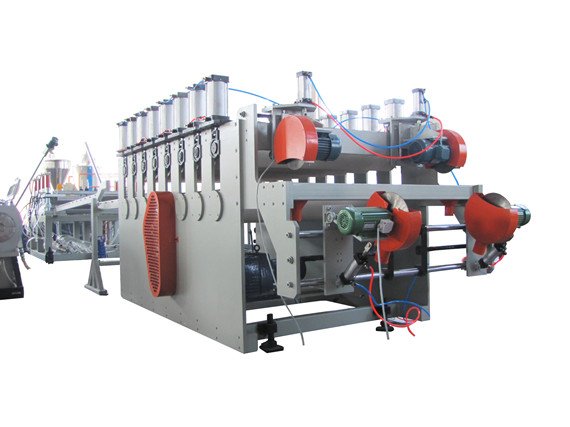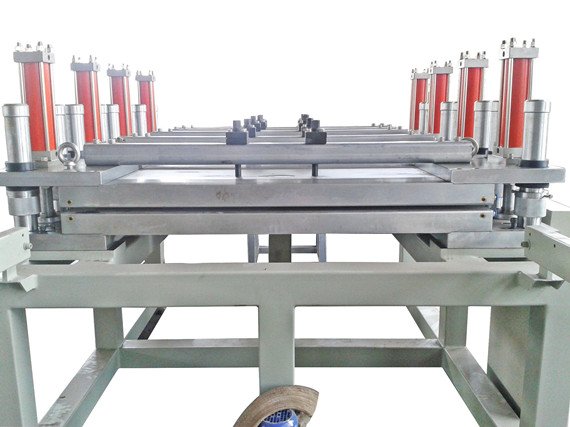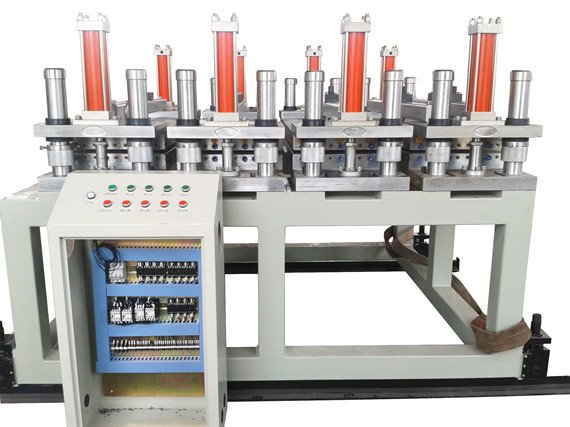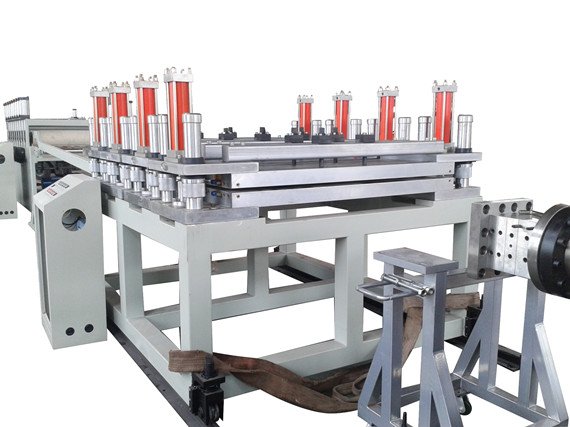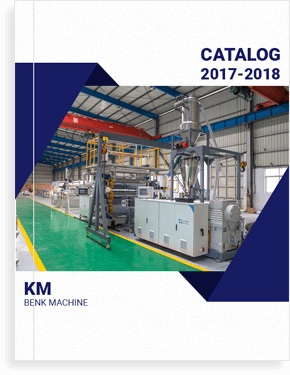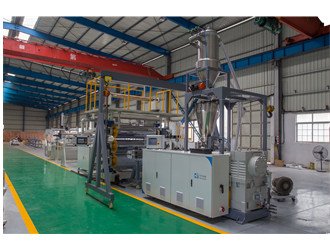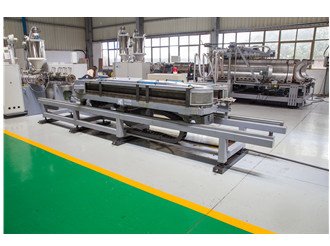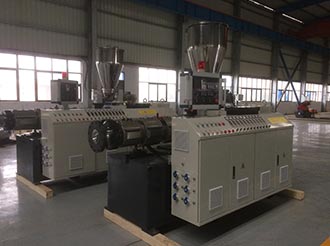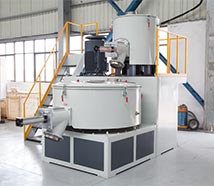PVC Foam Board Machine
| Extruder | 80 conical twin screw extruder |
| Mould | 1320mm width T-die from JC times |
| Calibration table with forming mold | 4 pairs forming mold moved by hydraulic |
| Cooling bracket | 5 meters with side cutting device |
| Haul-off | 8 pairs rubber rollers |
| Cutter | Cast alloy saw can cut Max. 1200mm width |
| Dust collector | Adopt 5.5 kW vacuum pump |
| Electrical controlling system | ABB inverter, Schneider contactor, Ormon temperature controller |
Your first choose for PVC foam board machine manufacturer in China
BENK PVC Foam Board Machine also names PVC foam board extrusion line which is used plastic extrusion manufacturing process to make PVC board, furniture foam board, and construction board.
Benk is a professional PVC foam board machine manufacturer in China, who can produce PVC board making the machine with stable properties and excellent quality with affordable prices. Benk plastic machine manufacturer not also can supply its project report which you want to know more about the machine as well as the investment, after buying our machine, we also can teach your staff how to use our machine and make PVC board.
PVC foam board can be used as furniture board and construction board, as it is lighter and cost price is much cheaper comparing to wood, and we also can protect the environment for our world.
BENK PVC foam board machine can produce 1200mm width and 5-20mm thickness board, the customer can customize the thickness as their market demands, our machine is consist of main extruder, T-die, calibration table with foaming mold, cooling bracket, 8-roller tractor with PE film laminator, cutting machine and stacker.
Benk PVC foam board extrusion line also can be used to produce solid PVC sheet after changing the T-die and downstream machine, the PVC sheet also to be used in furniture as well as indoor flooring.
- Production images
- Data Sheet
- Video
- Send Enquiry
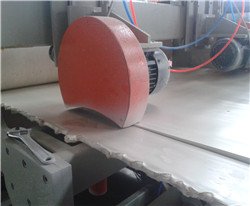
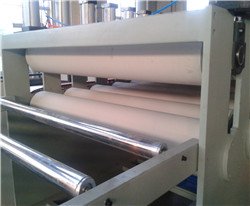
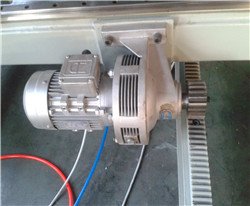
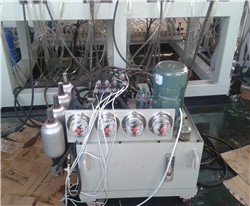
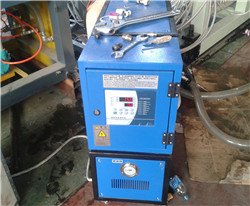
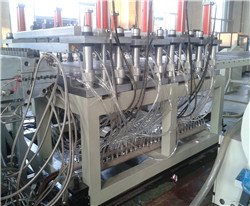
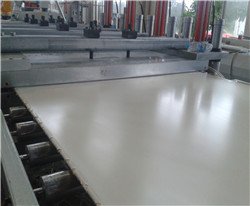
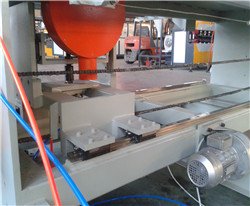
Data sheet of PVC foam board machine:
| Model | BKE1220 | BKE1680 | BKE2450 | |||
| Extruder | SJZ80/156 | SJZ65/132 | SJZ92/188 | SJZ80/156 | SJZ92/188 | SJZ80/156 |
| Motor | 75KW | 37KW | 110KW | 55KW | 110KW | 75KW |
| Board wide | 1220mm | 1680mm | 2450mm | |||
| Board thickness | 5-50mm | 5-50mm | 5-25mm | |||
PVC Foam board Machine: The Ultimate Importing Guide in 2018
Do you want to manufacture plastic foam boards?
If so, we wrote this guide to teach you all about manufacturing plastic foam boards.
We will also introduce our PVC foam board machine and explain how it works.
You don’t any need any special understanding of engineering to capture all that’s contained in this guide.
It is both for a buyers buying the PVC foam board machine for the first time, and experienced buyers alike.
So, keep reading:
Chapter 1: What is a PVC foam board making machine?
Definition of PVC foam board machine
Figure 1 Foam Board machine
It’s an industrial machine made of electronic and mechanical parts. It converts raw materials e.g. PVC resin and calcium carbonate to plastic foam boards.
So, what is a PVC foam board?
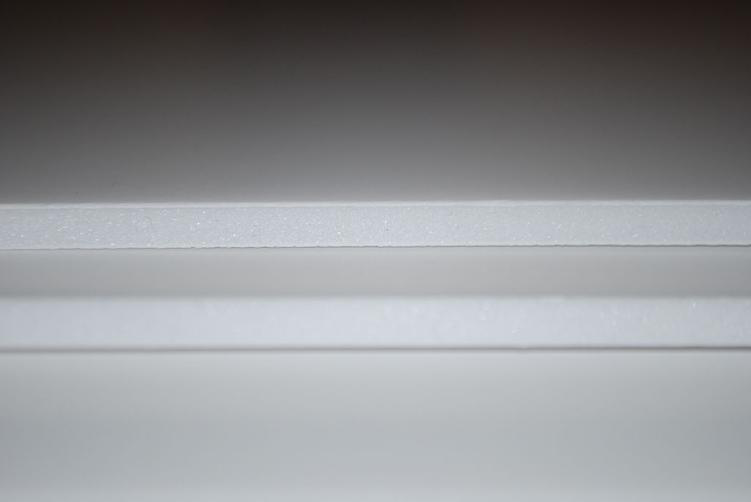 Figure 2: White PVC Foam Board
Figure 2: White PVC Foam Board
There are light-weight, rigid plastic materials.
Keep in mind that, PVC foam boards are less dense than say plastic marble sheets. This makes them lighter.
However, they still retain some excellent properties associated with PVC sheets such:
- Excellent chemical resistance
- High strength-to-weight ratio
- Flame resistance, among others.
Let’s jump to the next chapter and talk about raw materials and parts of our parts of our machine.
Chapter 2: Parts of Plastic Foam Board Extrusion Line and Raw Materials
Before we embark on this exciting chapter, I want you to watch this short video of the PVC foam board line.
Did you watch it? You probably saw continuous whitish board coming out from the die.
That’s the foam board, and to get it, you first need some raw materials.
Which plastic foam board raw materials will you need?
Every PVC foam board manufacturer has a recipe, which shows the quantities of the raw materials to be mixed before the process starts.
There are three main types: PVC resin, Calcium carbonate and PVC additives.
- PVC Resin
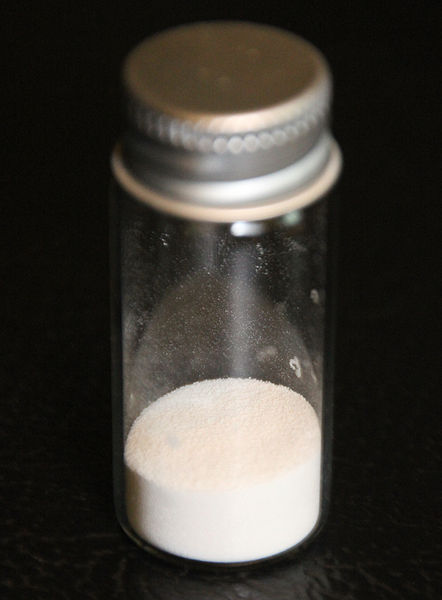 Figure 3: Sample of Pure PVC
Figure 3: Sample of Pure PVC
PVC resin a thermoplastic powder and the chief raw material for the plastic foaming machine.
It has a number of properties such as anti-corrosiveness, insolubility and more!
The resin is packaged in bags for shipping and has a white color, each bag is 25kg normally.
- Calcium carbonate
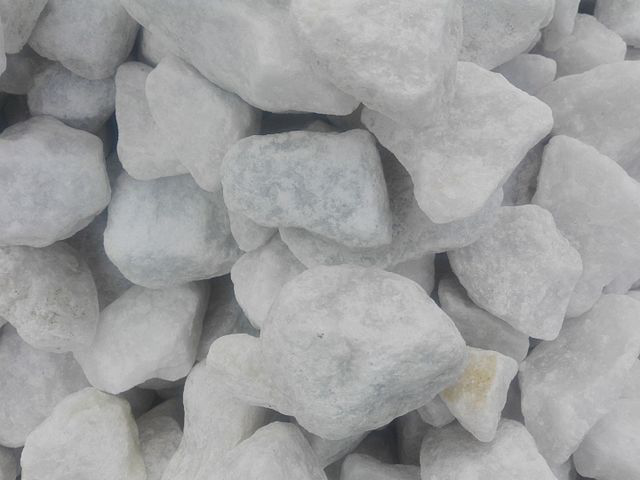 Figure 4: Calcium carbonate in rock form
Figure 4: Calcium carbonate in rock form
Calcium carbonate powder is widely used in PVC manufacturing as a filler.
It also enhances the physical strength and whiteness of the final products.
Because it costs less than PVC resin and including more of it in your formula can help reduce the cost of manufacturing.
However, it can cause the extruder’s conical screws to wear down more quickly.
Note that in the market, there are different mesh sizes for CaCO3 with each size having a specific application. For instance, food grade CaCO3 mesh is 1250.
For plastic foam boards, we suggest the client to use coated CaCo3 with a mesh size of 800-1000.
- PVC additives
You will require PVC additives to enhance the properties of the final PVC foam board.
Some additives also make the manufacturing process run smoothly and ensure you get consistence of the final products.
Here is a table that quickly summarizes the additives:
| stabilizer CZ75 | Ca/Zn Stabilizer |
| K400 | Foaming modifier |
| PEwax | External Lubrication |
| lubricant G60 | Internal Lubrication |
| processing aid NCR61 | processing modifier additive |
| foaming agent MS-107 | white(endothermic)NC foaming agent |
| foaming agent MSV-206 | yellow(exothermic) AC foaming agent |
| processing aid 3316F | Plasticizer & lubricant |
| white pigment T-95 | white pigment |
| TiO2 | Titanium Dioxide |
So, what are their functions:
a) PVC foaming regulators
They are acryclic based resins that have three functions.
- Aid the plasticization or fusion of PVC.
- Increase the resistance of the PVC to stretching (melt strength) thus preventing bubbles from forming on the board. This helps you get uniform PVC foam boards.
- Ensure the board flows perfectly down the line as its drawn by other down stream equipment like the haul-off system.
- Stabilizers
When the PVC resin is heated to temperatures of 170-180oC during extrusion, chlorine and hydrogen molecules are expelled in form or hydrogen chloride.
You don’t want this to happen because it can lead to the formation of unstable structures and decomposition.
Thus, we use stabilizers e.g. Calcium/Zinc to halt this decomposition.
In addition, stabilizers play an important role in the quality of the final products by strengthening their resistance to heat aging, weathering and UV rays from the sun.
- Internal lubricants e.g. lubricant G60
They are polar, and their main functions include:
- Decreasing the melt viscosity of the PVC by reducing friction between PVC molecules. This enhances plasticization.
- Promoting the surface finish of the PVC foam board products making it easier to print or glue on it.
- External lubricants e.g. Polythene (PE) Wax
They are non-polar, and their main function is:
- Reducing the adherence of the surface of PVC to the machine’s metal surface.
- White pigment/Titanium dioxide (TiO2)
White pigments and titanium dioxide give the final boards their brilliant white color.
More so, TiO2 will protect your Plastic foam boards from damage from UV light rays since it scatters and reflects light
Thus, plastic foam boards used as outdoor advertisement boards can last long periods without light damage.
- Processing aid 3316F
Processing aid 3316Fc has the appearance of a white powder with a melting point of 140-145ºC.
Its functions include:
- Increasing the stability of the foaming product.
- Acts a lubricant.
- Promotes plasticization.
- Processing modifier additive e.g processing aid NCR61
The processing modifier additive has the appearance of a white powder and it helps:
- Promote the quality of the final boards.
- Reduce manufacturing costs.
- Improve the manufacturing process.
Parts of the plastic foam board line
So, how will you mix the PVC foam board raw materials?
Now that you have learned what raw materials you require, it’s time to see how we mix them together before we start the actual manufacturing.
You’ll source the raw materials form different suppliers, for instance, in 25kg bags.
Your formula will dictate the propositions. Now, you’ll put everything in the PVC mixer.
l Mixer
This machine, I’m talking about:
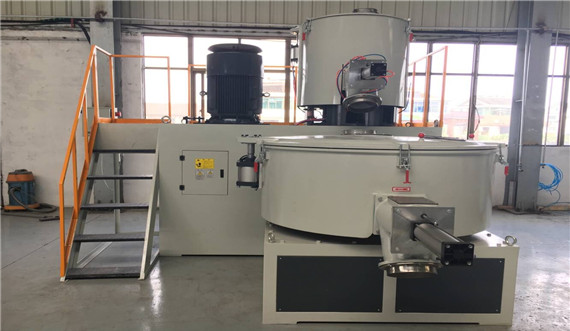 Figure 5: PVC mixer
Figure 5: PVC mixer
It has two main parts:
- Hot Tank (top)
The hot tank has a stainless steel blade and a heater.
Remember, the raw materials may have some moisture that you should remove before proceeding with the processing.
Heat required to drive away moisture is generated by the heater and friction due to the blade’s high-speed impact on the powder.
- Cooling Tank (bottom)
While heating is necessary to dry the materials, it may cause decomposition and plasticization.
We don’t want this to happen in the mixer. Only in the extruder.Thus, we quickly discharge the hot raw materials into the cooling tank.
It has a cold water inlet and hot water output. It also has a low-speed stirrer.
After cooling the raw materials to about 45oC, the material is discharged from the cooling tank into the screw loader, which we will talk about next:
l. Screw loader
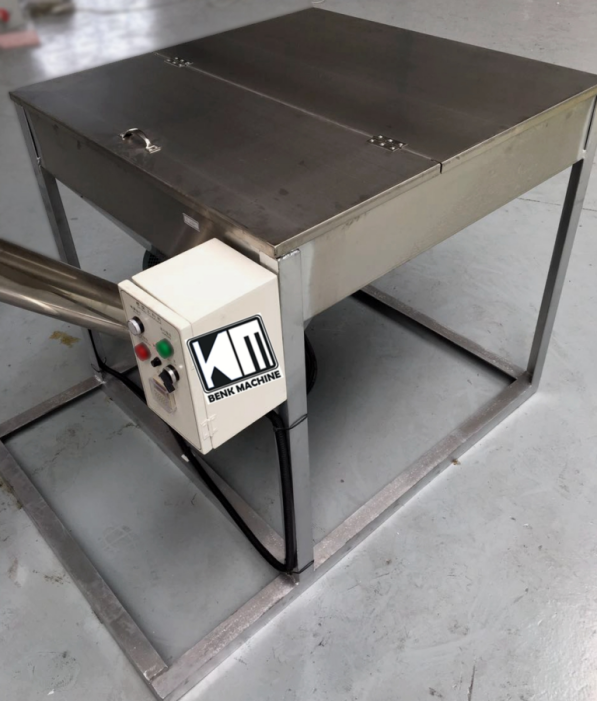 Figure 6 Screw Loader
Figure 6 Screw Loader
Can you see the rectangular stainless steel tank in the picture above? It collects the raw materials discharged from cooling tank of PVC cool and hot mixer.
It has a capacity of 200 Kilograms. It is also fitted with a timing device.
Now the screw loader must convey the raw materials to the feed hopper, which is part of the extruder.
For this purpose, it has a rotating helical screw that scoops the material and convey it upwards before it’s released in the conical shaped feed hopper.
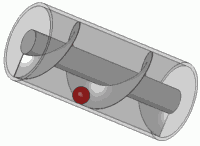 Figure 7 Motion of screw loader
Figure 7 Motion of screw loader
From the hopper, the raw material descends onto the rotating screws by double screw gravity.
Our screw loader allows you to set the wait time and loading time. This allows the screw loader to operate autonomously.
It is a great feature because; you don’t have to hire extra hands to load the raw materials manually. Thus, you save your labor and money.
We also made it using stainless steel instead of aluminum to give it extended service life.
2. Conical twin screw extruder
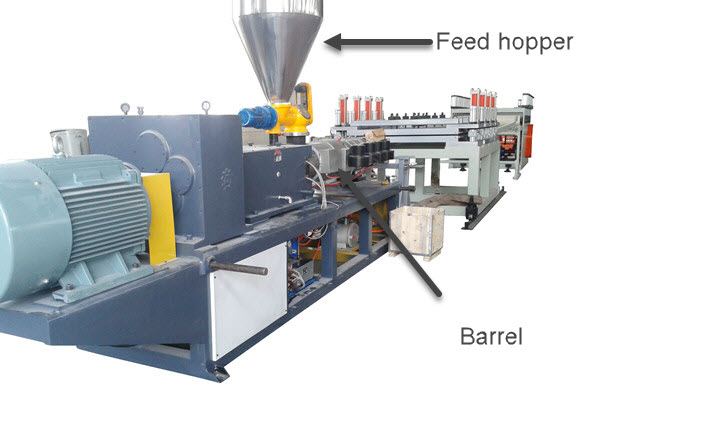 Figure 8 Conical twin screw extruder
Figure 8 Conical twin screw extruder
Extrusion is the most critical step in manufacturing PVC foaming boards.
It entails heating and plasticizing the PVC resin and other raw materials to form a molten plastic polymer that flows freely.
We used a twin screw conical extruder for our line. While it may sound like a complicated machine, it very easy to understand.
First, it has two rotating screws in the barrel. They rotate in opposite directions to convey the plastic material forward and plasticize the material.
Cast aluminum heaters placed under the barrel provide high temperatures required to melt the PVC resin and other additives.
More heat is generated by friction as the screws convey the materials through the extruder.
You also need to know is that temperature control is very essential. High temperatures can cause PVC resin raw materials to deteriorate.
And low temperatures would lead to the uncompleted process.
For monitoring of the temperatures, Benk has included the Ormon temperature controller that’s controlled on the electrical cabinet.
If temperatures go above what is required, cooling fans lining the barrel can be active. Our machine is set to issue a warning if the temperatures are abnormal.
There is more to learn more about the conical twin extruder. You’re free to check out our guide.
3. T-die
 Figure 9 T-die and foaming table.
Figure 9 T-die and foaming table.
In non-foaming plastic manufacturing like for the PVC marble sheets, the t-shaping die gives the extrudate its flat, final shape.
But in the foaming process, the t-die stops the foam from expanding. And gives it a general shape that will be later perfected by in calibration table.
Also note that, after the sheet leaves the die it will expand as bubbles foam in its internal structure.
This expansion is controlled by the molds ensuring you get the desired final shape and the right thickness.
4. Calibration table
When the extrudate leaves the shaping die, it enters into the calibration table. So, it’s mounted next to the t-shaping die.
But, what is it? It is table that holds equipment required for foaming and cooling.
In the case of our PVC foaming machine, that equipment is the foaming molds and cooling bracket.
Let’s discuss them in full:
5. 4 group forming molds
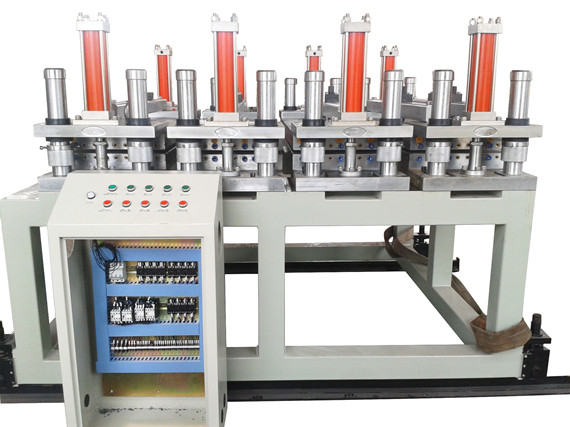
Figure 10 Foam molds on calibration table
Can you see the four sets of the foaming molds?
Molds are shaped like the final board. Their inside surface is made of stainless steel for durability.
It is polished to provide the least amount of resistance to plastic foam board’s movement.
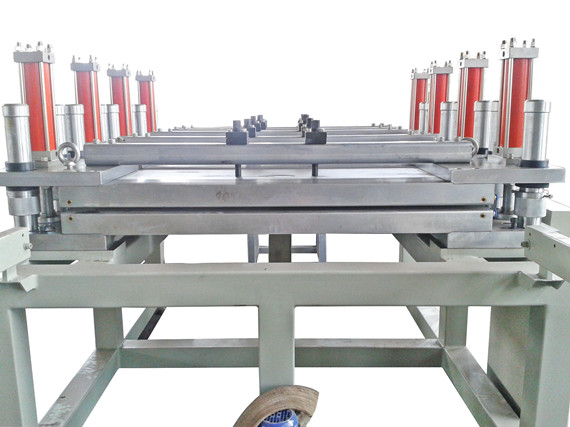
Figure 11 Foam mold front view
But, what is the function of the molds? Well, they have two functions:
- Cooling
- Foaming
Now, I know you might ask what is foaming?
“To form is to produce a mass of small bubbles in interior surface of the board.”
So, how does foaming happen?
Foaming is triggered due to a pressure decrease as the molten PVC flows from the extruder to the molds.
Two processes take place:
- Foaming additives in the formula react to release gases.
- Release of gases dissolved in the molten PVC due to the pressure release.
Formation of air pockets in the internal structure decreases the board’s density making it lighter.
Likewise, the board expands inside the mold to occupy the interior space and all the corners.
But why do we used 4 foaming molds?
This allows us to get the desired length of the calibrated PVC foam board without gaps.
The molds can also be moved together or apart by hydraulic.
Our machine can produce boards that are 1220mm wide with a thickness of 5-25mm.
But if you want to make thicker and wider PVC foam boards, we also can customize the line for you to make boards that are 1550mm, 1680mm or 2050mm wide.
And how does cooling occur?
There are there mechanisms to cool the boards:
Oil temperature controller
Oil temperature controller controls the temperature of extruding molds.
Cooling water
PVC-wood foam boards are also cooled by cycling water. It circulates in channels inside the forming molds.
Now, if the water is not cold or the water volume is not enough, the forming efficient will not be good.
In our PVC foam board making machine, we have installed a water chiller.
Cooling bracket
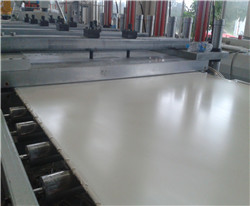
Figure 12 Cooling bracket
When the PVC foam board leaves the last foaming mold, it emerges onto the cooling bracket.
If you look at the picture above, you will notice that the cooling bracket is a series of rollers.
The board slides over it as it’s exposed to the surrounding air for further cooling.
Our cooling bracket is five meters long with two side cutting devices that trim that edges.
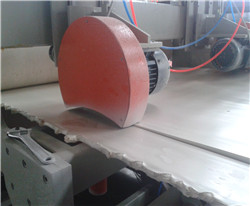 Figure 13 Side cutting saws
Figure 13 Side cutting saws
10 roller Hauling machine
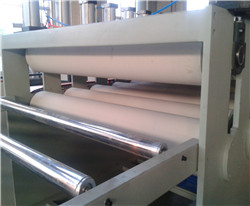 Figure 10 Roller haul-off machine
Figure 10 Roller haul-off machine
The traction necessary to move the PVC foam board down the processing line is provided by the hauling machine.
Our haul-off machine has 8 rollers for precise position of the foaming board for cutting.
Auto cutter
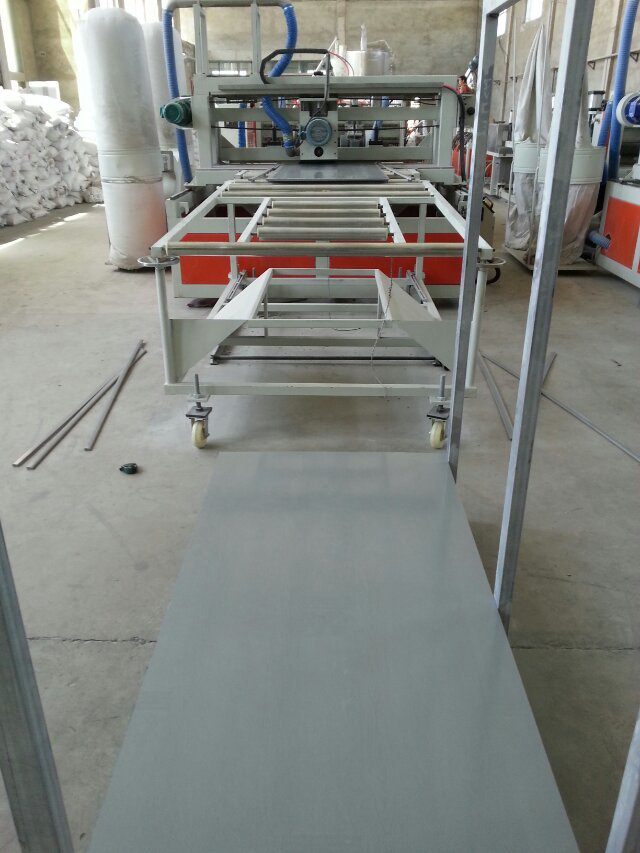 Figure 15 Cutting machine with stacker
Figure 15 Cutting machine with stacker
The auto cutter relies on photoelectric sensors and computerized meters to accurately measure the required length before releasing the blade. So, it tend to be very precise.
Dust collector
A 5.5 kW vacuum fan placed under the cutter helps collect dust produced as from the cutting process.
Stacker
The stacker receives the unload signal from the auto cutter. Then it automatically unloads the board and stacks it with rest of the finished products.
Auxiliary machines
1. Air compressor
There maybe difficulties in stripping the PVC foam board from the surface of the mold.
To remove the board from the surface smoothly, we have added an air compressor.
When activated, it blows compressed air between the WPC PVC foam board and the mold’s surface.
2. Water chiller
We have included an multilayered chiller unit alongside the main line.
It supplies cold water to mold’s channels. Then cools the incoming hot water.
Auxiliary machines to reduce WPC PVC board waste:
Plastic waste is generated in a number of ways:
If strict quality control is not observed, some foam boards may emerge with defects.
Also, there are pieces of formed PVC foam boards cut by the side cutting device.
You can reground and recycle the PVC waste and in the process save costs. Luckily, we have two recycling machines:
l PVC crusher
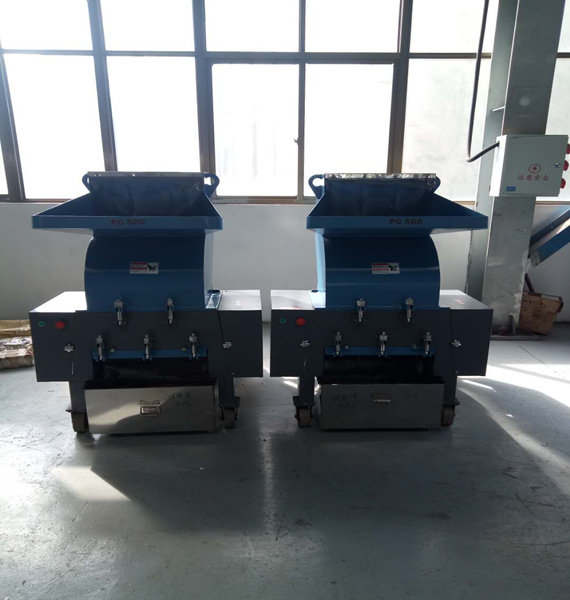
Figure 16 PVC foam baord Crusher
The PVC crusher cuts big pieces of PVC foam board into small bits; so that they can be grind or pulverized into powder that’s mixed with the fresh batch of raw materials.
Our PVC crusher can crush soft and hard plastics.
It also has an isolator for low noise. (more info on the crusher.)
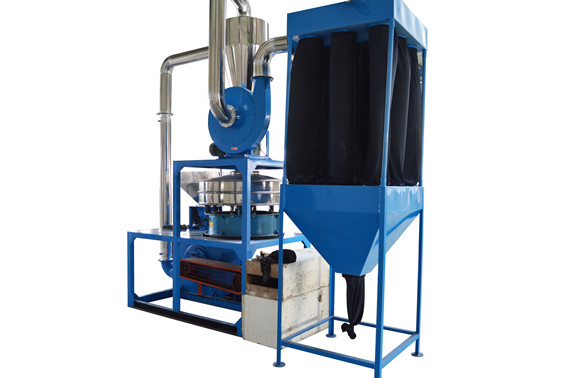
Figure 17 Plastic Pulverizer
Our high-speed miller has a low power consumption.
It’s also equipped with an auto feeder. We also included a cyclone separator to get the right mesh size.
We can make it per your specifications. Read more about miller here.
Conclusion
In this chapter we have explored the PVC foam board machinery. And in the chapter, you’ll see the PVC foam board manufacturing process as a whole.
Chapter 3: What is the PVC foam board manufacturing process?
3.1 How to make WPC PVC foam board:
It all starts with preparing a formula. This will guide you as you source the raw materials from different suppliers.
Next, you weight the materials in the right proportions and load them into the high speed mixer.
There are two tanks; one for heating the raw materials. And the other for cooling the materials.
From the cooling tank, the dry raw materials are discharged into the screw loader’s tank. It then pumps the raw materials into the feed hopper to begin the process of extrusion.
Now, the extruder is divided into four zones, with the temperature increasing from zone to zone.
First the raw materials melt. Plasticizers in the formula will make PVC more flexible and softer.
At the end of the extruder’s barrel, the molten plastic is expelled under high pressures into the t-shaping die then to the mold’s mouth.
In plastic foaming the t-shaping die gives the board a general rectangular shape. There is one process remaining– which is foaming.
Foaming occurs in the mold. And it takes places thanks to foaming agents in the formula and decrease in pressure.
Still in the mold, cooling takes place. We use an oil temperature controller to up or down the mold’s temperature.
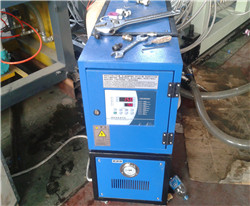 Figure 18 Oil temperature controller
Figure 18 Oil temperature controller
From the mold, the WPC PVC foam boards pass through the cooling bridge, where heat loss to the surrounding air takes place.
The edges of the boards are also trimmed. Next, the board is cut into pieces with the cutter.
If you need to apply a surface finish to the board, you will need a lamination machine for PVC foam board.
And that’s how to make PVC foam boards in short.
How long it will take to start PVC board line?
The extruder and foam board molds will take about 3 hours to heat up.
How many people are need to manage in the PVC foam board production line?
You will need about 2 laborers to operate the production line.
How can you make WPC PVC boards more beautiful?
There are two ways to make WPC PVC foam boards more appealing.
In the factory, you can laminate them by hot stamping a printed paper on the board.
In this case, you will need a lamination machine for PVC foam board.
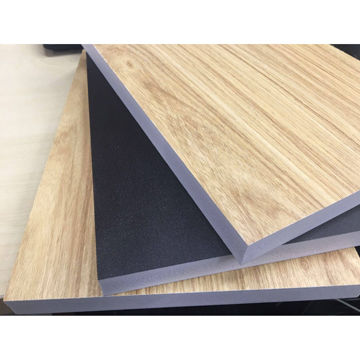 Figure 19 Laminated PVC foam board
Figure 19 Laminated PVC foam board
Secondly, foam boards used for outdoor or indoor advertisement banners can be printed on with UV ink.
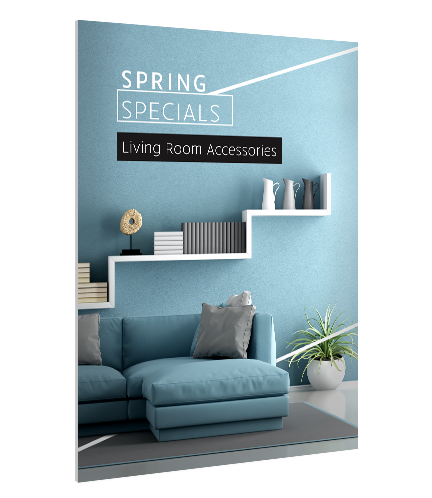 Figure 20 Printed PVC foam board
Figure 20 Printed PVC foam board
Foam boards printed on with ink last longer, and they tend to be resistance to scratches, weathering or abrasion.
You will need a PVC foam board printing machine to create full color designs.
Here is a video showing the foam printing machine in action:
Chapter 4: What is the difference between WPC PVC board and PVC foam board?
WPC PVC and PVC foam boards are very similar products. Their difference arises from in their formula.
What is the difference in the formulation of WPC PVC and PVC foam board?
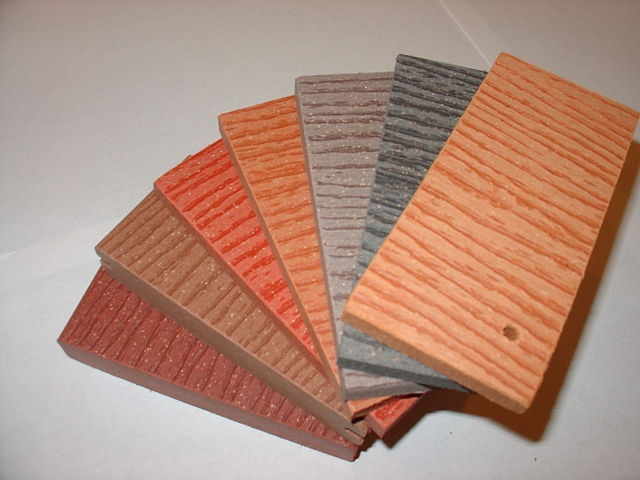 Figure 21 WPC PVC boards
Figure 21 WPC PVC boards
Wood Plastic Composite (WPCs) are made by mixing wood fibers or wood flour and thermoplastics such as PVC.
You can get wood fibers from sawdust, bamboo, waste wood materials and wheat husks.
Similar to manufacturing PVC, you will ground wood particles into powder, mix them together with PVC resin then extrude the materials into the mold to get the get the desired shape.
You will also add foaming agents, pigments, stabilizers in the formula.
Although, WPC contain wood particles, they are resistance to decay and termites.
They can also be worked on by woodworking tools.
Is there any difference in their manufacturing process?
No…
WPC and PVC foam boards undergo the same processes and the equipment used are the same.
So, some clients will refer to PVC foam board as WPC PVC foam boards.
We can supply these two formulas to you when you order the machine from us.
Finally, it is very easy to make PVC foam boards or WPVC foam boards.
Chapter 5: Application and uses of PVC Foam Board or WPC PVC foam board?
It’s becoming necessary to find better and cheaper alternatives to wood products such as MDF boards or plywood.
While WPC and PVC boards tend to have similar properties as wood, they are better in many aspects.
Let’s see what makes them great alternatives in this modern era:
Properties of PVC foam board
1. Non-toxic
WPC and PVC boards are made with eco-friendly and non toxic materials.
They don’t have heavy metals such as lead or zinc.
In fact, you make them with recycled materials such as sawdust waste.
2. Flame retardant
Thanks to the 50% concentration of chlorine in PVC, it’s a fire resistance plastic.
When it burns it emits a highly unpleasant odour, allowing for early detection in case of a fire.
What’s more, PVC does spread fire.
3. Suitable for working
PVC and WPC foam boards have a smooth surface. This makes them idea for printing.
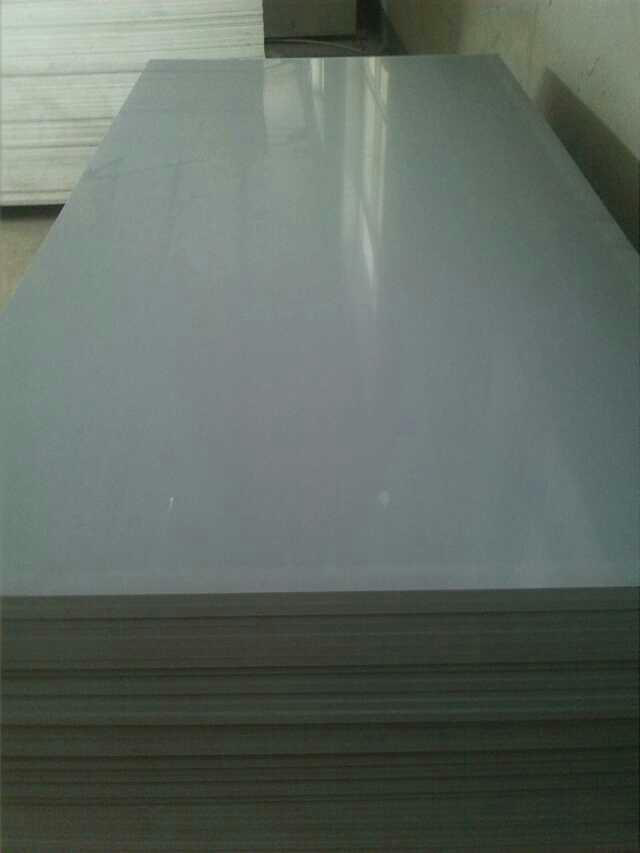
Figure 22 Shiny Plastic Foam Boards
You can also laminate them with a variety of patterns and designs that mimic wood, stone, or other materials.
What’s more, you can use carpentry tools to work WPC PVC foam boards.
They can be drilled, nailed, screwed, glued, and engraved without any issues.
In fact, WPC unlike wood is less likely to break or split. It also has an excellent nail or screw holding ability.
What’s more, the PVC foam board colors won’t fade for a long time.
4. Easy installation
Because of their good workability and light weight feature PVC and WPC foam boards are very easy to install as show in the video above.
- Pest Proof
You don’t have to worry about pests such as termites, beetles, wasps or ants destroying PVC foam boards. - Anti-Microbial & Chemical Resistance
PVC and WPC boards are impervious to mildew and mould, unlike wood, which is attacked with microbes when exposed to water.
They are also resistance to common corrosives like salts and some inorganic acids.
Application of WPC PVC foam boards
1. Construction industry
In the construction industry, you can use WPC PVC foam boards as separation walls for offices, interior panels, indoor decoration boards, public building walls panels and shopfitting.
They tend to be suitable for high moisture areas and offer good sound and thermal insulation.
2. Furniture and Household decoration
You can use PVC and WPC boards as furniture boards for closets, wardrobes, storage cabinets, kitchen cabinets or bathroom cabinets.
3. Industrial application:
In industries, you can use PVC foam boards in refrigeration warehouses, chemical corrosion engineering, among other applications.
4. Advertisement industry
PVC foam board signs are hugely popular with advertisers because they are light weight, cost effective, adhesive friendly, and print friendly.
You can use them as outdoor or indoor signage, advertisement boards, lettering, trade fair displays, logos, or engraving cutting boards.
5. Transportation industry:
In the transport industry, Wood Plastic Composite and PVC foam boards are incorporated into structural parts. For instance, floor covering, frames, body sides, and decoration plates.
Since foam boards are lighter, they reduced fuel consumption. They are more environmental friendly.
Some special PVC foam boards are fire retard making them safer and less likely to emit toxic fumes when burnt.
You will also find WPC PVC foam boards in planes, buses, ships, and may foams of public transport.
Chapter 6: Technical Specifications of Plastic Foam Board Machine
Technical specification of plastic foam board machine
Here are the specifications for the machines used in the plastic foam board line. Note that they can differ if you choose to order a custom Wood Plastic Composite board machinery.
| Extruder | 80 conical twin screw extruder |
| Mould | 1320mm width T-die from JC times |
| Calibration table with forming mold | 4 pairs forming mold moved by hydraulic |
| Cooling bracket | 5 meters with side cutting device |
| Haul-off | 8 pairs rubber rollers |
| Cutter | Cast alloy saw can cut Max. 1200mm width |
| Dust collector | Adopt 5.5 kW vacuum pump |
| Electrical controlling system | ABB inverter, Schneider contactor, Ormon temperature controller |
Size of PVC foam board Making Machine:
| Model | BKE1220 | BKE1680 | BKE2450 | |||
| Extruder | SJZ80/156 | SJZ65/132 | SJZ92/188 | SJZ80/156 | SJZ92/188 | SJZ80/156 |
| Motor | 75KW | 37KW | 110KW | 55KW | 110KW | 75KW |
| Board wide | 1220mm | 1680mm | 2450mm | |||
| Board thickness | 5-50mm | 5-50mm | 5-25mm | |||
WPC board manufacturing project report
Benk can also supply a manufacturing project report for the WPC PVC foam board machine.
It will give you more vital information about:
- PVC or WPC foam board process
- Manufacturing capacity
- Land and building requirements
- Equipment specifications along with the prices
- Projected output and cost per unit
- Economic evaluation of the project
- Staff skills requirements and more.
This information will be especially useful if you’re new to plastic manufacturing. It can also help you obtain loans from financial institutions.
If you need a WPC board manufacturing project report, send your inquiry to the manager.
Chapter 7: How to find a reliable Plastic Foam Board Machine supplier from China
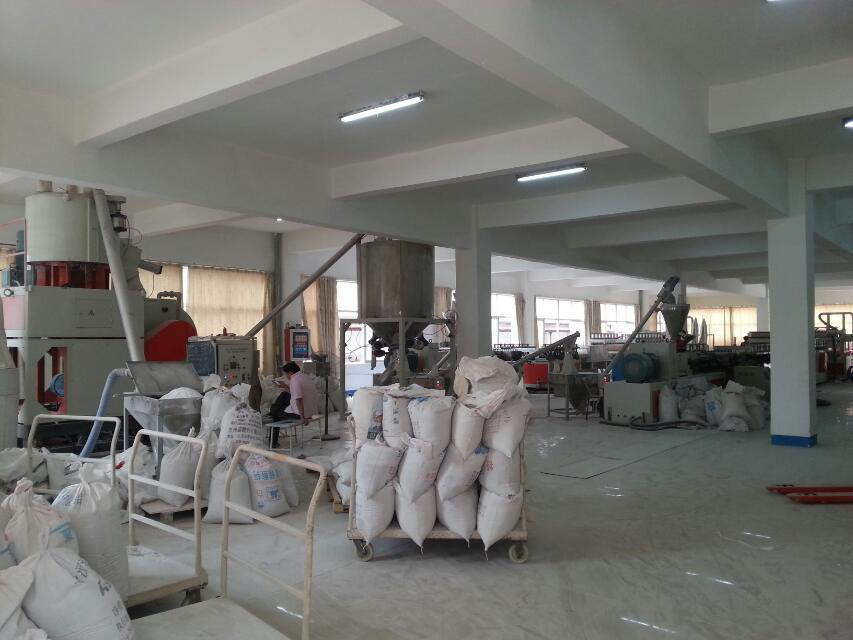
Figure 23 Warehouse with raw materials
Now that you have known the ins and outs of the PVC foam board line, it time to talk about finding a reliable supplier.
First things first, you should be careful when choosing where to buy the machine.
Does the supplier have a website? If so, have they posted their physical address, landline number and phone number?
When you contact the factory, do you get a response?
You should also check how many years they have been in business. Also, ask for registration number that’s unique to any business in China.
How to find the best prices of WPC PVC foam board machine manufacturer?
You can check prices of the WPC PVC foam board machinery on business directories.
But, the best way is to ask for quotes from equipment manufacturers directly.
This way you can get the appropriate cost based on your needs rather than an estimated figure.
Prices may vary depending on:
- The type of extruder
- Whether the machine is computerized or non-computerized
- Automatic or non-automatic mode of operation
- Feeding mode
BENK Plastic Foam Board Machine
We believe that we are best PVC foam board machine China supplier. We make machines per the customer’s requirements and offer crucial guidance to our customers.
So, what is our buying process?
First you contact us with your requirements. We will try to determine the machine you need and come up with a proposal.
You can go over our proposal and make an order.
Then, we will prepare a quote. If you are satisfied with the price and agree to the payment terms, we will prepare a contract for the PVC foam board machinery for you to sign.
Immediately after you pay, we will start assembling the machine for you. We can ship it within 30 working days.
Here are more reasons you should trust us:
i. We test all machines before shipment
We test all machines in our factory before shipping them to our overseas customers.
And during testing, we invite customers to come and verify the machine is working as per their requirements.
We can also customize your electrical connection design as per your country’s requirements.
Some customers require 220V and 3 phase power, while others need 380/220 volts and 3 phase power connections.
What’s more, we supply water connections diagrams for the chiller and hot mixer.
ii. Support you as you install the machines
You will get support from our engineers who are vastly experienced in testing and designing the WPC PVC foam board line.
You will only cover their accommodation, transport, insurance and other expenses. And pay them a reasonable salary of about $50 per day.
They can also train your staff and help you prepare the formula.
On a day to day basis, we have two to three engineers helping our overseas clients.
Some offer support online and when the problem requires them to travel, they will gladly come to your factory.
iii. 10 years+ experience
We value all our customers as part of our growing family. And we give them the best service possible.
In fact, in the last 10 years we have been in operation, Benk has not received legal complaints against it.
iv. Warranty
Our machines have been awarded CE certificates of quality.
We also offer a 13-month guarantee of replacement and repair of substandard parts.
Plus a six month supply of free space parts for easily damaged electrical parts.
After submitting your request, we send the parts within 7 working days.
v. Quick Shipping & Delivery
After you sign the contract, give us 30 working days to prepare and test the machines.
If we have all the parts in our warehouse, you may get the machine in less than 30 working days.
vi. Parts from World-Renown Brands
We use electrical parts from internationally recognized companies.
For instance, ABB inverter, Simens motor, Ormon Temperature controller.
Using famous brands makes it easy for you to source replacements parts. And this makes our machines less prone to damages.
Frequently asked questions
- How will the machine be transported?
Machines will be shipped because they are too heavy for air freight. You are free to choose your shipping partner. Some prominent companies include DHL, EML, UPS and FedEx Express.
- Where can I get the raw materials?
You can get raw materials such as PVC resin or foaming additives from suppliers in China.
However, some materials like CaCo3 may be available in your home country.
Generally, we recommend that you find a market with competition, so you can get the best prices.
- Who will help me set it up?
We can send an engineer from Benk to help install the machines for you.
- Do you offer any training?
Yes. Our technicians can help train your staff. We also provide various diagrams and guides.
Conclusion
Thanks for reading this guide.
I’ll admit it..it’s kind of hard to know all the aspects of the PVC foam board machinery in one sitting.
However, what’s important understanding how each part works, the screw design you need, and services the PVC foam board machine supplier provides.
The next step is to get in touch with us.
If you have samples of products from other wood plastic composite manufacturers that you want to manufacture, show them to us.
We can determine exactly what you need. You can send us our manager an email at [email protected] or submit an inquiry.
We’re here for you.
Further reading
- Improved dry vacuum calibration tables
- Foam formation in the plastics industry
- Vacuum Guide
- Closed-cell PVC Foamboard

